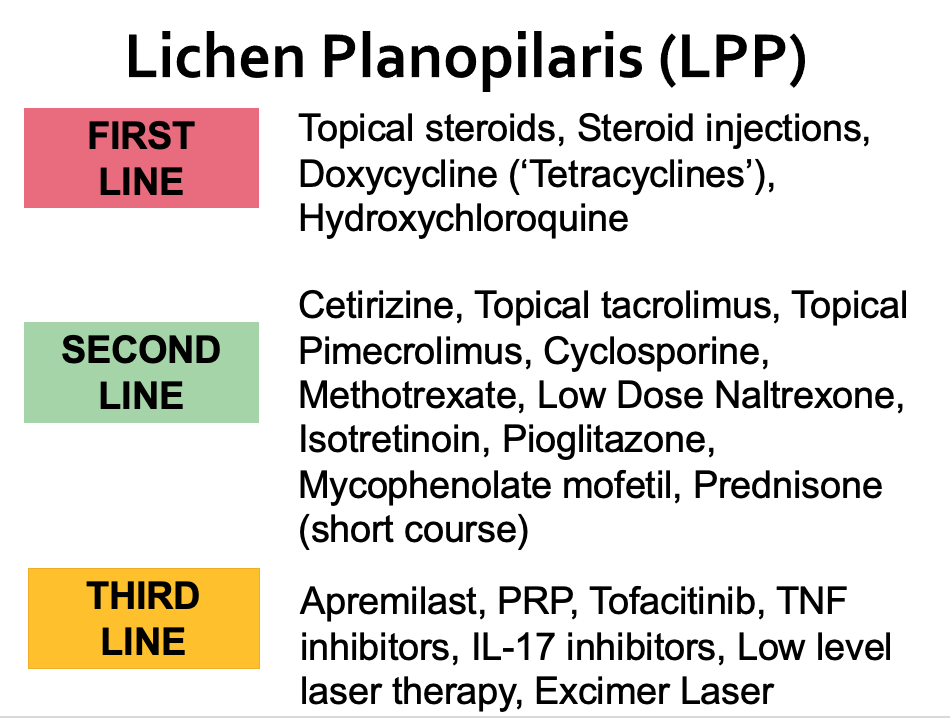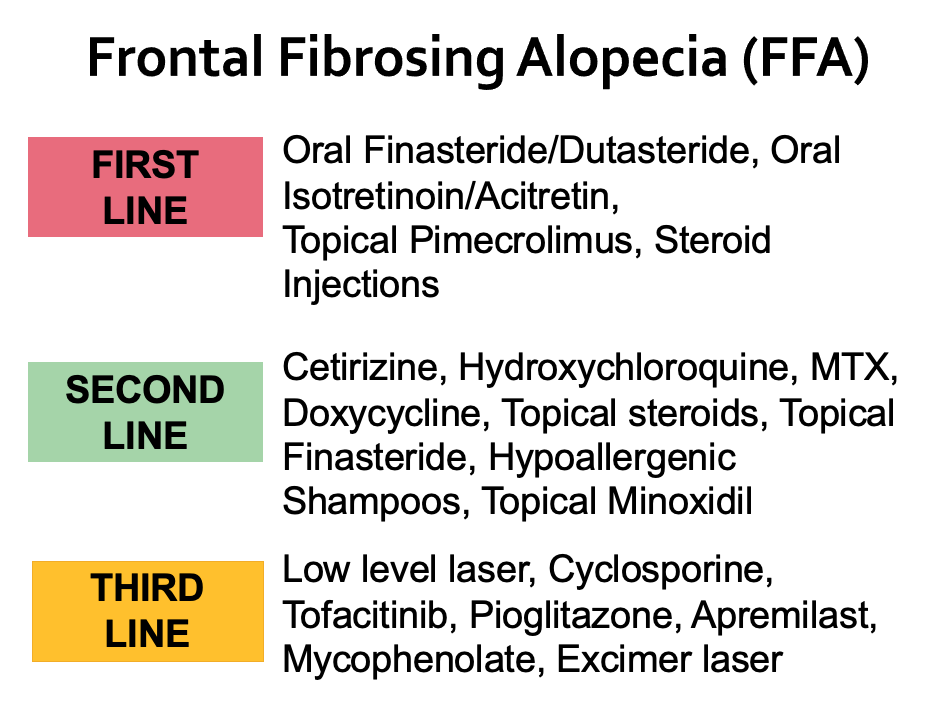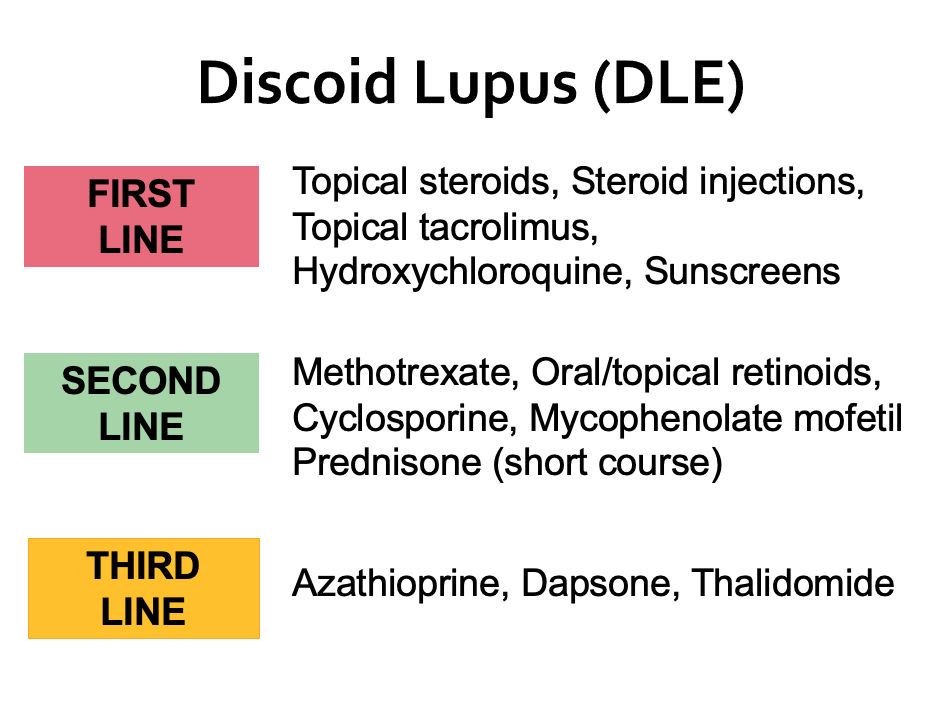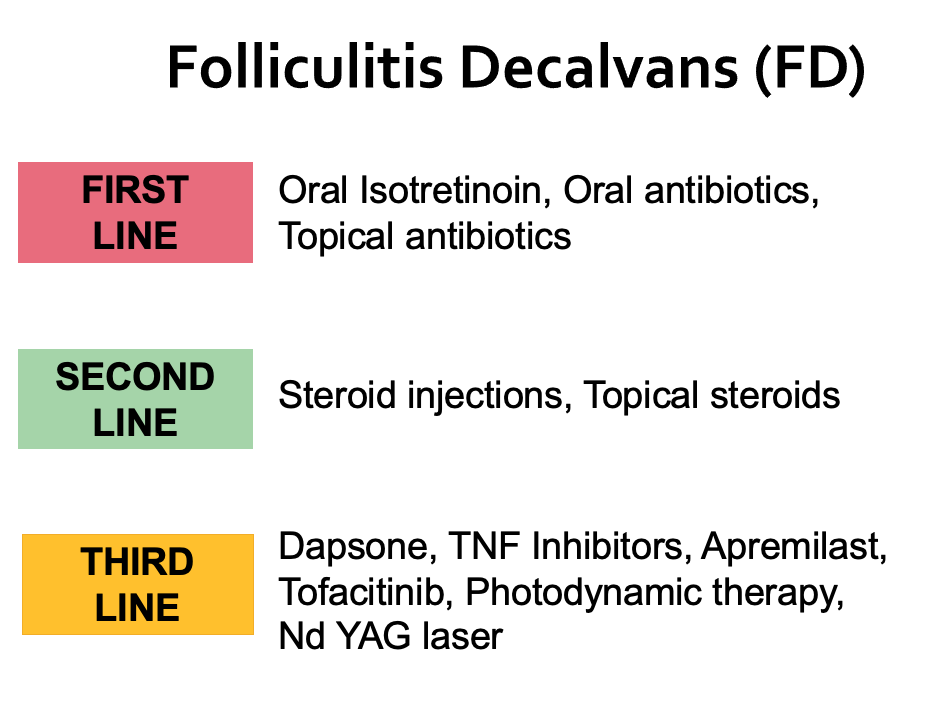National Scarring Alopecia Awareness Month (Day 11, Fact 11): Treatments Differ for Different Types of Scarring Alopecia
The Appropriate Treatment to Prescribe For Scarring Alopecia Will Depend on the Exact Type of Hair Loss
When a patient with scarring alopecia asks what treatment they should use to stop the disease, the next question that must be asked is “What type of scarring alopecia does the patient actually have?”
There are three big “groups” of primary scarring alopecias - the lymphocytic group, the neutrophilic group and the mixed group. The groups were created somewhat arbitrary based on the type of inflammation seen on scalp biopsies. Different types of scarring alopecias are treated somewhat differently - even the various different conditions with a given group are treated differently. Of course, there are some similarities between all the treatments but there are some very important differences.
Just a decade ago, one would treat all the so called “lymphocytic” scarring alopecias somewhat similarly and all the “neutrophilic” scarring alopecias somewhat similarly. As we have come to understand more and more about these conditions over the last decade, treatment protocols slowly have come to diverge.
For example, dutasteride and finasteride have proven to be among the most effective treatments for frontal fibrosing alopecia yet that would not be viewed as the case for lichen planopilaris and central centrifugal cicatricial alopecia. All three of these conditions are types of lymphocytic scarring alopecias and biopsies of all three conditions appear fairly similar under the microscope. Treatments are not simply the same.
Treatment for scarring alopecia does not always simply start out with what is “best.” Treatment must take into accout safety, affordability, feasibility and effectiveness (what I termed the S.A.F.E. Principle). For example, cyclosporine is very effective in lichen planopilaris but do I start out with cyclosporine in most patients? No, I don’t. I see if I can get the disease under control with safer treatments before bringing on board cyclosporine.
First-line, Second-line and Third-line Treatments for Scarring Alopecia
Treatment begins with “first line” agents and then one brings on board “second line” and “third line” agents if needed. The hope is that a patient will be able to stop the disease with a first line agent and not need to move on to second or third line agents.
In the accompanying images, I outline my typical first line second line and third line treatment options for various scarring alopecias. There will be some slight variation in views among experts - but only slightly.
The Lymphocytic Scarring Alopecias
The Neutrophilic Scarring Alopecias
The Mixed Scarring Alopecias
This article was written by Dr. Jeff Donovan, a Canadian and US board certified dermatologist specializing exclusively in hair loss.









